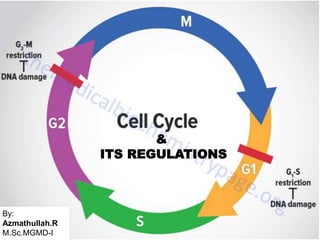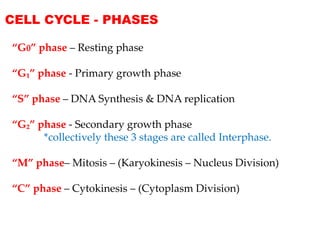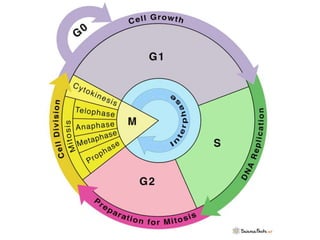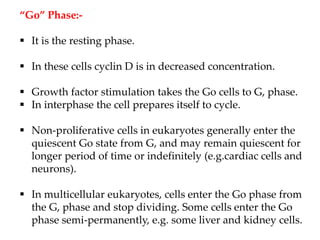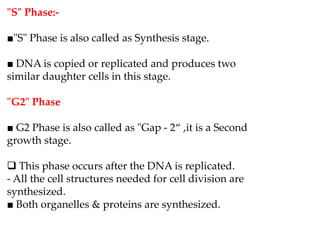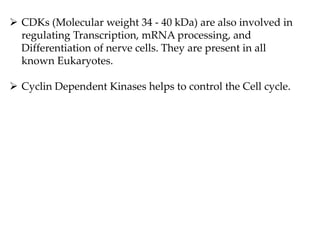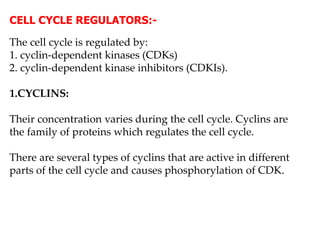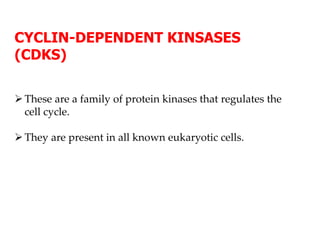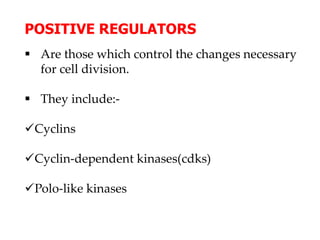The document discusses the cell cycle and its regulation. It can be summarized as follows:
1) The cell cycle consists of interphase (G1, S, G2 phases) and mitosis (M phase), where the cell grows and replicates its DNA before dividing.
2) Transition between phases is regulated by cyclins and cyclin-dependent kinases (CDKs), which promote progression.
3) There are checkpoints between phases to ensure DNA replication and cell division occur accurately before the cell cycle continues.
